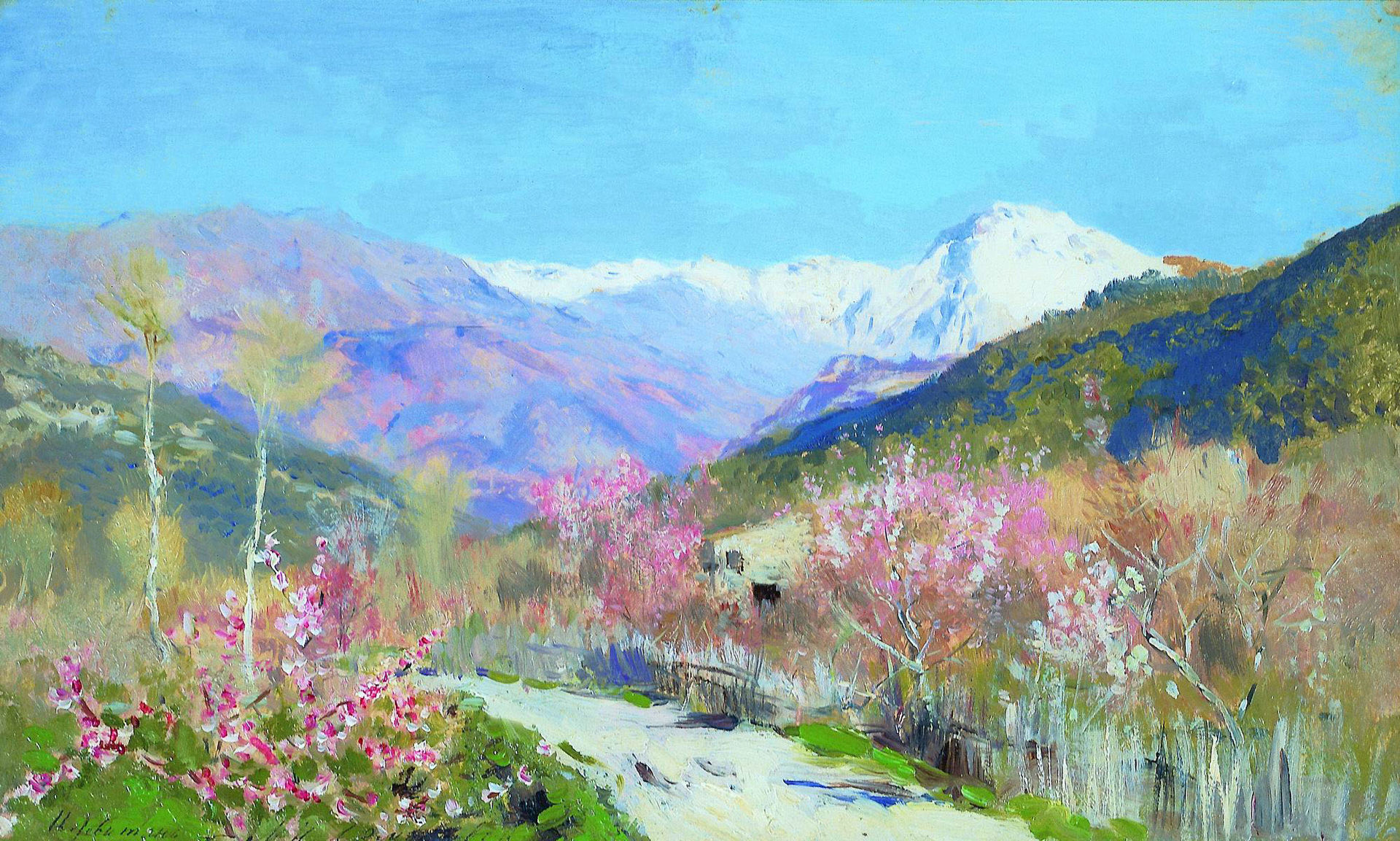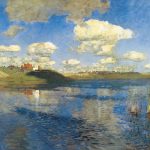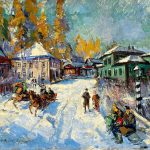
Isaac Ilyich Levitan (1860–1900) was a preeminent Russian landscape painter, whose work captured the fleeting moods of nature with profound emotional depth and technical mastery. Though primarily known for his depictions of the Russian countryside, Levitan’s oeuvre also includes works inspired by his travels abroad. Among these, “Spring in Italy” stands out as a luminous testament to Levitan’s versatility and his ability to capture the essence of a landscape’s unique character. This painting, created during Levitan’s visit to Italy in the early 1890s, reflects both a departure from and a continuation of his thematic exploration of landscape as a mirror of the human soul.
“Spring in Italy” is imbued with a sense of renewal and vitality that contrasts with the more melancholic tones often found in Levitan’s Russian landscapes. The painting depicts an Italian countryside in the full bloom of spring, with lush greenery, blooming flowers, and a serene blue sky that stretches into the distance. The composition is balanced and harmonious, with Levitan employing a softer palette to capture the gentle light and vibrant colors of the Italian spring. This choice of colors and the delicate treatment of light not only convey the physical beauty of the scene but also evoke a sense of peacefulness and contentment.
Levitan’s time in Italy marked a period of significant personal and artistic growth. Facing health challenges and the pressures of his career in Russia, Levitan sought respite in the Italian countryside, where he found new sources of inspiration and a different quality of light and landscape. “Spring in Italy” reflects Levitan’s response to these new surroundings, showcasing his ability to adapt his style and technique to capture the distinct atmosphere and luminosity of the Italian landscape. The painting is characterized by its loose brushwork and the fluidity of its composition, which allow Levitan to convey the transient beauty of the scene with immediacy and poignancy.
The painting’s composition demonstrates Levitan’s masterful control of perspective and space, drawing the viewer’s eye into the depth of the landscape. A path meanders through the foreground, leading to a cluster of houses nestled among the trees, which suggests the presence of human life harmoniously integrated into the natural world. This integration of the human and natural elements is a recurring theme in Levitan’s work, reflecting his belief in the profound connection between humanity and nature.
“Spring in Italy” also exemplifies Levitan’s interest in the transformative power of light. The way in which light filters through the trees and illuminates the landscape is rendered with exquisite sensitivity, highlighting Levitan’s preoccupation with capturing the ephemeral moments when light and landscape converge to create a mood or atmosphere. This attention to the nuances of light is reminiscent of the Impressionist movement, yet Levitan’s approach remains distinctly his own, rooted in a deep emotional engagement with the landscape.
Despite its beauty and tranquility, “Spring in Italy” is not devoid of the melancholic undertone that characterizes much of Levitan’s work. The fleeting nature of the spring season, with its transient blossoms and changing light, serves as a metaphor for the impermanence of life and the passage of time. This layer of melancholy adds depth to the painting, making it not just a celebration of spring’s beauty but also a contemplation on the themes of change and loss.
“Spring in Italy” was created during a pivotal time in Levitan’s career, as he sought to expand his artistic horizons and explore new thematic and stylistic possibilities. The painting reflects Levitan’s ongoing dialogue with the landscape genre, demonstrating his ability to find universal themes in the specificities of place and season. Through works like “Spring in Italy,” Levitan contributed to the evolution of landscape painting, moving beyond the representation of physical space to explore the landscape as a reflection of emotional and spiritual experience.
Levitan’s influence on the development of Russian landscape painting cannot be overstated. His work bridged the gap between the 19th-century tradition of the Wanderers (Peredvizhniki) and the emerging modernist sensibilities of the early 20th century. “Spring in Italy” occupies a special place within Levitan’s body of work, offering a glimpse into the artist’s encounter with a landscape outside his native Russia and highlighting his capacity for renewal and reinvention.
In conclusion, “Spring in Italy” is a testament to Isaac Levitan’s enduring legacy as a master of landscape painting. Through his sensitive portrayal of the Italian countryside, Levitan invites the viewer to share in a moment of serenity and reflection, capturing not only the visual splendor of the scene but also its emotional resonance. The painting stands as a poignant reminder of the artist’s profound connection to the natural world and his unparalleled ability to convey the beauty and complexity of the landscape through his art. Levitan’s work continues to inspire and move audiences, affirming his place as one of the most important and influential landscape painters of his time.






